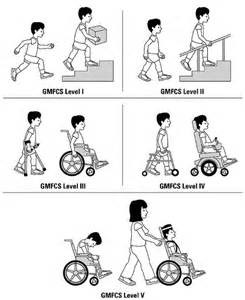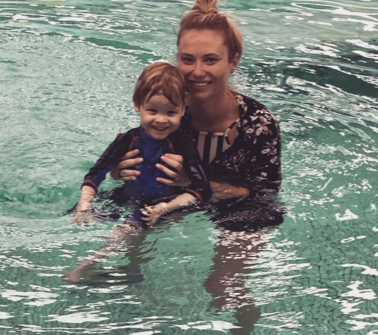Cerebral palsy is a developmental condition resulting from damage to the developing brain before or during birth that can significantly affect movement in the areas of muscle tone, motor planning, reflexes, balance and posture.
There are 4 different types of CP (Spastic, Dyskinetic, Ataxic, and Mixed) and they are classified into which area of the body is affected (Quadriplegia, Diplegia, Hemiplegia). The severity is then classified by a scale into 5 categories that can predict the outcome of development called the GMFCS.
- GMFCS Level I : Walks without limitations
- GMFCS Level II : Walks with limitations
 GMFCS Level III : Walks with adaptive equipment assistance
GMFCS Level III : Walks with adaptive equipment assistance- GMFCS Level IV : Self mobility with use of powered mobility assistance
- GMFCS Level V : Transported in a manual wheelchair
Physiotherapy intervention can assist children with CP throughout their development by
- Maintaining range of movement in joint affected by muscle tone through positioning
- Improve balance and coordination
- Improving posture
- Developing gross motor skills
- Strengthening weakened muscles and stretching tight muscles
- Advice and support on orthotics and AFOs
- Hydrotherapy for muscle stretching and strengthening with reduced effects of gravity
- Post surgical intervention
- Assisting with applications for equipment funding
For more information please contact our paediatric trained physiotherapists.

